Sam Quinones's Blog, page 9
April 8, 2016
Going Home to The Bronx
In 1970-71, my family lived in the Bronx – the Norwood Heights section – on a street called Bainbridge Avenue. I attended sixth grade at a school named P.S. 56 (Public School) – in a class taught by Mrs. Tinkelman. My father was teaching at City College of New York and my mother was completing her masters at 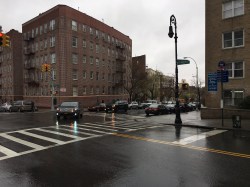 Fordham.
Fordham.
It was a remarkable change for a kid from the bleached L.A. suburb of Claremont, where everything was sunny, non-ethnic, where migrants from across America had landed and left a lot of who they were back home.
My PS 56 classmates were Jews, Italian-Americans, Irish-Americans, a Ukrainian, a Puerto Rican, and about 10 black kids bussed in from South Bronx. It was the first time I’d known any kids you could describe in those ways. It was nothing like I had ever experienced back in suburban L.A. I loved the time. Their accents seemed to come from mafia movies. I learned to play stickball. The Jewish boys I knew all wore ties to school every day. A few of the black kids talked back to the teacher constantly, which amazed me, but they always did their homework.
On Wednesdays, for the weekly assembly, the school required the girls to wear white dresses, and we boys to wear white shirts and ties, which in time I grew to like.
At school was the first I heard the term “high waters” – this in reference to pants I was wearing. I had no idea what people were talking about at first, then I did and insisted my mom buy me better-fitting jeans. I also spent the entire year thinking “Ho” was a reference to a garden tool but didn’t understand why the tool would be so often mentioned.
I bought my first 45s – “Let It Be,” the song that most reminds me of the Bronx, and “I’ll Be There,” which is the second-most. My parents enrolled my brother, Nate, and me in an “ecology” class at the Natural History Museum in Manhattan. Every Saturday for eight weeks, we’d march to the elevated train on Jerome Avenue and take the subway into town – two boys alone, ages 11 and 9. Never had a problem.
That year, the World Trade towers were completed, Frank Serpico was in the news, and the bank robbery happened that was later made into the movie “Dog Day Afternoon.” Times Square did not look like corporate Disneyland – but in fact looked quite the opposite.
In the Bronx, I met the first two kids I’d ever known with my last name. Puerto Rican brothers. We played basketball together at the Mosholu-Montefiore Community Center, where I also took a pottery class. I had my first girlfriend at PS 56, though I was terrified to talk to her. Her name was Linda Neihardt.
At school, I was milk monitor, distributing milk to the other classes, along with Frankie Campbell, Salvatore, and Terry – whose last names I’ve long forgotten. We spent time around Joe the Janitor, who had a heavy New York accent. I always wondered what became of them. Frankie and Terry were from South Bronx and were growing up to reach young adulthood as the Bronx famously became a war zone.
When Muhammad Ali fought Joe Frazier for the first time in the Fight of the Century, which it probably was, I was the only kid in my class rooting for Ali. I found this strange, for to me Muhammad Ali was the only reason to care about the sport of boxing, and I haven’t since he retired. Several kids asked me why I had moved from California to New York as so many folks were headed the other direction.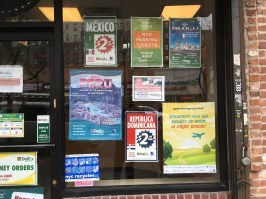
Yesterday, I was invited to speak about my book at the nearby Montefiore Hospital’s psychiatry department. Afterward, my daughter and I walked down a transformed Bainbridge Avenue. The house where I lived for a year is now home to the hospital’s Children’s Psychiatry unit. The Bainbridge Pizzeria, which served still the best pizza I’ve ever had, is now the Norwood Grocery. Bainbridge is dotted with 99-cents stores, small Chinese and Latin restaurants, cellphone shops and beauty parlors.
P.S. 56 when I went there was woefully under serviced, with ancient plumbing and only a small patch of fenced-off grass. Now it is under complete reconstruction. A worker told them they were adding new classrooms, a new gym, and a playground. It’s due to open in September.
The area is now home to mainly Dominicans, but also Muslims (judging from women in shador dress), Pakistanis, some Mexicans (judging from a store or two), and blacks. No white people at all.
This change probably came many years ago, and I found it fascinating because I had not heard in the news that it had happened. I found that encouraging.
In the countries where many of these immigrants, and those with whom I lived, are from, the concept of “holy land” and who it belongs to seems part of the history of life. Ancient battles, purges and pogroms, bitter feuds tenderly nurtured over generations divide one ethnic or religious group from another and keep neighborhoods, villages, static and unchanging.
(In the years after I left, the neighborhood became a refuge for folks from Northern Ireland escaping the violence there, was known as Little Belfast and was a hotbed of support for the IRA. Norwood spawned one Irish band, Black 47. The Irish influence waned after peace came to Northern Ireland and folks returned.)
This concept is foreign to anyone from Southern California, with its rambunctious real estate market that shapes neighborhoods, then reshapes them again 25 years later, and aggressive sunshine I’ve always felt helps people leave the Old World behind.
True, it has had its eruptions in the form of gang feuds and violence, but they have subsided to the point where they almost don’t e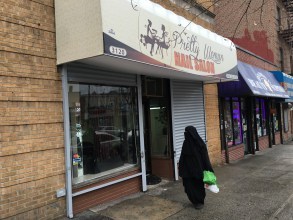 xist any more.
xist any more.
I don’t know how well folks in the neighborhood get along today. It wasn’t perfect back when I was living there.
But in Norwood Heights, a massive demographic transformation took place twice in the space of 40 years and it happened quietly, organically and without the kind of eruptions that might attract national, much less worldwide, attention.
It felt good to be back.
The post Going Home to The Bronx appeared first on True Tales: a Reporter's Blog.
April 3, 2016
Obama, Elkhart & the Dope of 24-Hour News
Elkhart, Indiana sounds like a town that needs to stop watching 24-hour news.
This Jackie Calmes story in the New York Times reports that the town once on its back, having lost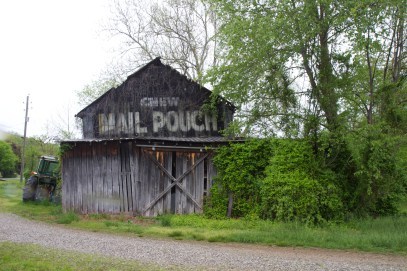 many jobs and about to lose thousands more should Chrysler have gone under in 2009, has rebounded from the depths of the Great Recession and now is near full employment (3.8% unemployment down from 23%).
many jobs and about to lose thousands more should Chrysler have gone under in 2009, has rebounded from the depths of the Great Recession and now is near full employment (3.8% unemployment down from 23%).
This has a lot to do with Barack Obama’s auto bailout and stimulus package passed to resuscitate the ravaged economy he inherited upon taking office.
Obama visited this town as a candidate and as president and did not forget it, but instead helped save it. Yet support for him is weak in Elkhart, Indiana. Yet somehow they find something to support in Donald Trump, and can only fault the president.
The problem here goes pretty deep, I think. If nothing – not even solid political performance – is good enough for us any more, who are we then? Has the great American ideal of accountability been taken to such absurd extremes? Will only perfection suffice?
It used to be common for people to have mixed allegiances, because their politics were born of their towns and the solutions people saw locally, which stretched quite naturally across party lines. Today we’ve grown into bubbles, even locally, obeying the stark divides in Washington and in the broadcast media. We view politics as some sports contest and we’re fans of one team or another. I’ll admit it: nothing the Dallas Cowboys do is going to make me their fan. But that’s not how politics, governing should be.
We excoriate government, but government is our way of coming together, in community, to solve problems.
Why imitate our national political leaders who live captive to politics as sport? And what about some courtesy? How about saying thank you?
I’ve written a lot about my belief that our heroin and pain pill-addiction problem stems from years of destroying community in this country, leaving us without the social immune system to combat a drug as isolating as opiates. Elkhart is one place where that happened. Now it appears that this town is forming community again, becoming a place where people are working and putting their lives back together. I assume it’s not perfect and that much remains to be done.
But this attitude expressed by people in Elkhart now that things are better, to me, feels childish, feels unserious. Above all, it feels as if they’ve downed too much of the dope of alarm, frenzy and anger dealt by 24-hour cable news and talk radio, which traffic in all that and never heard of a solution to a problem, nor reported on one.
We luxuriate in complaining about politicians, yet won’t support those who follow through and who help create community out of destruction?
Seems to me that if we believe the alarmism of 24-hour cable news despite the evidence looking us in the face, then we’ve become infantile, hardly deserving of our world-power status, and we deserve the loonies we get.
The post Obama, Elkhart & the Dope of 24-Hour News appeared first on True Tales: a Reporter's Blog.
February 14, 2016
Francis, Mexican bishops, & the New World
Pope Francis had something wonderful to say to the bishops of Mexico yesterday.
“Be vigilant so that your vision will not be darkened by the gloomy mist of worldliness; do not allow yourselves to be corrupted by trivial materialism or by the seductive illusion of underhanded agreements; do not place
your faith in the ‘chariots and horses’ of today’s pharaohs. …”
and
“Do not lose time or energy in secondary things, in gossip or intrigue, in conceited schemes of careerism, in empty plans for superiority, in unproductive groups that seek benefits or common interests. … Do not allow yourselves to be dragged into gossip and slander. … If you want to fight, do it, but as men do. Say it to each other’s faces and after that, like men of God, pray together. If you went too far, ask for forgiveness.”
 If there are bishops due for a spiritual tongue-lashing, it’s Mexican bishops.
If there are bishops due for a spiritual tongue-lashing, it’s Mexican bishops.
When I lived there, I was struck by how uninterested most bishops (and there were notable exceptions) seemed in the country’s poor. Many seemed either absorbed with ritual, or with political intrigue and playing golf with the powerful – either oblivious to, or studiously ignoring, the country’s towering wave of poverty, throttled opportunity and energy, and of course, today, violence.
In the most deeply Catholic parts of the country – Oaxaca and Chiapas – it was as if the church hadn’t changed much since the Spaniards brought it over. The priest was viewed as a quasi-deity in many Oaxacan villages. People were not allowed to look at him when he walked their streets – this as recently as the 1970s, from people I’ve spoken to. The religious traditions of those villages – the fiestas that poor peasant farmers had to pay for, miring them in debt for years; the incessant use of alcohol – have served to keep generations of people poor.
Thus so many Mexicans, especially so many Mexican Indians from isolated villages in states like Chiapas and Oaxaca, convert to Protestant denominations when they leave their home towns.
Look at Pico-Union and South Central Los Angeles, or the agricultural Valley of San Quintin in Baja California. You will see hundreds of new churches – Pentecostal, Baptist, Jehovah’s Witness and more – many of which were formed by Zapotecas, Mixtecs, and Mayans who were once thought to be the bedrock of Mexican Catholicism.
They were easy to control when they hadn’t seen anything of the New World, and were cloistered in the Old.
Away from the limitations, prohibitions, and ecclesiastical arrogance they grew up with, many seem to feel that spiritual reinvention ought to be as much a part of their new lives as the socio-economic conversion they are going through.
Just as global economic competition has entered Mexico in the last few decades, so too is the country facing religious competition. Too often, the church still seemed to behave as if it had a monopoly on souls.
I thought I saw similarities between the church and how Mexican immigrants turned away from Gigante, the Mexican grocery-store chain that tried to enter the Southern California market a few years back, thinking they could treat these immigrants the same disparaging way they had back home.
Mexican bishops and the Pope ought to visit one of my favorite places in Los Angeles: St. Cecilia Catholic Church, at 42nd and Normandie, a vibrant (and full) church, with congregations, and saints, from Oaxaca, Guatemala, El Salvador and Nigeria.
They’d see how Catholicism wins when it open itself to its parishioners, allows them to own the church and take an active role in it. They’d see how crucial that is to energizing a congregation now working in the New World and used to, but unhappy with, the ways of the Old.
The post Francis, Mexican bishops, & the New World appeared first on True Tales: a Reporter's Blog.
February 12, 2016
Trump, Heroin & Mexico
A lot has been made lately of Donald Trump and his wish to build walls between the U.S. and Mexico.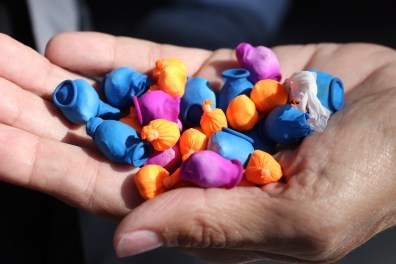
This got a new bump recently when the candidate, in New Hampshire, reiterated that he’d build these walls and use them to stop Mexican heroin from coming into the U.S. – New Hampshire being one of many states suffering from huge jumps in opiate addiction.
Opiate addiction appears to be emerging as an issue in the presidential campaign, as well it should.
I’ve read a lot that does seem to be too nuanced on either side of this topic.
Here are a few of my thoughts:
Virtually all our heroin comes from Mexico, or comes from Colombia through Mexico.
Originating now in our hemisphere, heroin now changes hands less and travels far shorter distances than it did when so much of it came from Turkey or Burma (1970s).
All that means that it’s cheaper here than ever, it’s more prevalent, and it’s far more potent. And all that, in turn, has a lot to do with why people begin using it in the first place (cost), and then stay addicted (prevalence), or relapse after rehab, and then why they die more frequently (potency).
Used to be that people (addicts from the 1970s) lived for many years on heroin – when it was more expensive and less potent and more arduous to find. A lot of heroin addicts who started in those years did die, but they died during the AIDS epidemic from sharing needles, not so much from overdoses.
Now heroin addicts aren’t living long; They’re dying young and quickly. I believe that’s because so much of the drug comes from Mexico, making it cheaper, more potent and more prevalent than ever.
* *
We already have walls up in many parts of the border. Heroin already crosses where walls are – Tijuana (two walls) is one example.
When uncut or less cut, heroin is easy to conceal because it’s so concentrated – again because now it comes from Mexico, which is so close.
So you don’t need trucks to get a lot of heroin across – though trucks have been used. A lot of people walk it across at the border crossings hidden in a purse, or a backpack, or on their person.
There’s a market for heroin because there is a demand for it.
* *
That said, I believe that supply is fundamental to this issue – supply created this demand, just as it did during the cocaine days. We didn’t have a huge demand for cocaine before Colombians began smuggling tons of it up through Florida. Likewise, we didn’t have huge numbers of heroin addicts before doctors began prescribing enormous quantities of opioid painkillers such as Vicodin and OxyContin, etc. and a lot of people got addicted, then switched to heroin, which is now, as I said, cheaper than ever.
Heroin traffickers, as I hope I made clear in Dreamland, came late to this party. They followed the demand for opiates that had been created by massive overprescribing by doctors of these painkillers.
* *
Just as we cannot arrest our way out of this problem, we likely cannot treat our way out of it, either. Particularly with treatment costing so much and taking so long. Typical treatment that has any chance of success, from what addiction specialists tell me, is a minimum of nine months. One doc I know insists a year is the minimum.
Curtailing supply is thus essential to giving each attempt at rehab and recovery a greater chance of success. So that every recovering addict isn’t bombarded with dope at every turn, as they are in so many parts of the country today.
* *
That said, among the steps I think we need to take – some of which are articulated by the CDC recently – is retraining doctors to question why they prescribe these drugs and, if they’re necessary, in what quantities. For example, for wisdom tooth extraction, 60 Vicodin is common. That seems crazy to me.
Seems like 6-12 pills would be reasonable, and that the patient should return if he needs more. Doctors prescribe so many of these pills out the gate because they don’t want to see patients a second time, and they know that insurance companies often won’t reimburse for those follow-up visits, no matter how few.
So this problem will require that insurance companies change their practices, and reimburse doctors for follow-up visits for the (again) few patients who might need more of those pills after routine surgery.
* *
Walls have had a healthy effect on the border. Tijuana (two walls, as I said) is an excellent example of that. When it was the main crossing point – 1960s until mid-1990s – rapes, robberies, assaults and murders were common, particularly in the 1980s and early 1990s. Then the first wall went up, then the second. Now it’s calm on that border line. May be a weird symbol for a globalized world, but murders and rapes are rare now.
Despite those walls, heroin will seep in, through the cracks, in ways that seem to me impossible, or extraordinarily expensive, to stop. And that’s not the supply that caused this problem.
The post Trump, Heroin & Mexico appeared first on True Tales: a Reporter's Blog.
February 10, 2016
True Tales From Another Mexico – at 15

I remember not really being able to absorb the idea that I’d actually written a book. Over the years, it sold only well enough to be known as a “cult classic” – a description I like.
I think it remains relevant, largely because of the stories in it: A colony of drag queens, a lynching, Oaxacan indian basketball players, the section of the Mexican Congress then known as “The Bronx,” pistoleros, telenovela queens, the Paleteria La Michoacana popsicle makers, the slum boss known as La Loba and her Chippendale dancers, and Chalino Sanchez, the late, great narcocorrido singer.
It’s still for sale, and is now on Kindle. … Hope you like it….





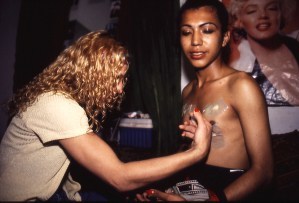


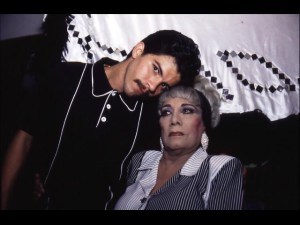


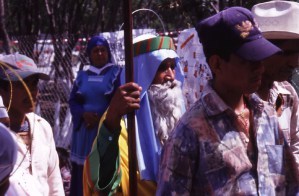

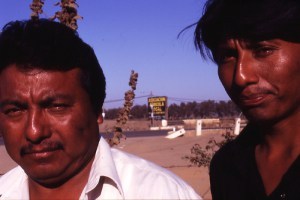


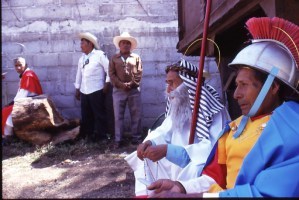

The post True Tales From Another Mexico – at 15 appeared first on True Tales: a Reporter's Blog.
February 8, 2016
Tacos and Dope Culture
A new L.A. taco restaurant has a narco theme to it.
Tacos Los Desvelados in Maywood, California named its food for notorious Mexican and Colombian drug traffickers. Chapo Guzman gets a taco, Pablo Escobar gets a burrito, and so on.
That’s pretty funny, and possible only because of Maywood’s safe remove (it’s a small town southeast of Los Angeles) from the real and sinister violence that these guys have created.
Here’s something else that’s not so cute:
Mexico’s Attorney General’s office reports finding 662 bodies in 201 clandestine graves in 16 Mexican states from 2005 to the present. Of those, 380 have been so decomposed that investigators can’t tell if the bodies are of men or women.
In Iguala, Guerrero alone, 63 graves with 133 bodies have been found.
Let’s go get some tacos!
The post Tacos and Dope Culture appeared first on True Tales: a Reporter's Blog.
February 7, 2016
Heroin and the Super Bowl
“H-E-R-O-I-N – what’s that spell?”
This 60-second ad about heroin addiction, filmed at a high school in Missouri, will air during the Super Bowl.
A drug that once was associated with jazz musicians, pick-pockets, East LA gang members, NY street hustlers and punk rockers is now featured on our secular holiday, interrupting pizza and guacamole as it’s piped into American homes from Alabama to Alaska.
That’s a stunning event for this country.
What’s more, millions of people will know someone like that girl.
Post Script: Sadly, the Super Bowl came and went and this spot did not run. Not sure why. If anyone has an idea, please let me know.
The post Heroin and the Super Bowl appeared first on True Tales: a Reporter's Blog.
February 5, 2016
Thanks Kentucky Gov. Bevin
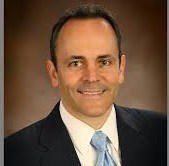
I’m very honored and touched by what he said, and that he followed those words with a commitment to increase funding for opiate-addiction treatment over each of the next two years. [Click here to view his speech. The part I’m referring to begins about 59:30.]
When I began writing the book that became Dreamland, I occasionally received strange reactions from people wondering what on earth I was thinking writing about heroin. Didn’t that, after all, belong to the 1970s?
I didn’t think so. I felt it rumbling beneath the surface and ready to explode, just no one was talking about it in 2012 and 2013, and even in 2014. Most of those who knew about it from personal or family experience were ashamed to speak.
So it feels satisfying that the book is helping people in a position of public influence, among them the governor of Kentucky, a state overwhelmed by this scourge, understand it, talk openly about it, and make policy to address it.
Storytelling will do that. That’s what I’ve long believed. Thanks, governor!
The post Thanks Kentucky Gov. Bevin appeared first on True Tales: a Reporter's Blog.
January 13, 2016
Adios Underworld Pioneer Sana Ojeda – I think
Mexican Mafia prison-gang member Peter “Sana” Ojeda, a pioneer in the Southern California underworld, was found guilty by a jury today of a slew of racketeering charges in a federal court in Orange County.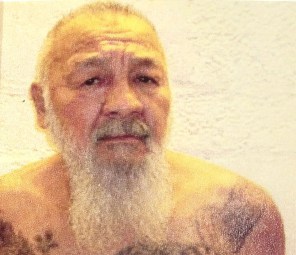
In 1992, Ojeda held meetings at Salvador Park in Santa Ana, bringing together warring Latino gangs from across Orange County.
It was a stunning moment that showed the power of the Mexican Mafia in the barrios, sworn mortal enemies stood docilely together as Ojeda, from atop baseball bleachers, told them to stop the feuding and drive-by shootings.
The so-called Peace Treaty spread from there to Latino gangs across Southern California, during which Mexican Mafia (Eme) members banned drive-by shootings.
In the end, though, the peace treaty proved a Trojan Horse. Eme members used the newly discovered obedience of Latino street gangs to set up a vast business model of using thousands of gang members to tax drug dealers in barrios across the Southland, then funnel the proceeds to Eme members and their relatives in prison and on the streets.
The new system, which remains in place today, transformed the region’s Latino street gangs from neighborhood entities into money-making enterprises. Neighborhood gang loyalty disintegrated, as feuding over money, taxation, the favor of Eme members, turned gang members against each other. It also led to mass defections of gang members from the Mafia structure inside California prisons.
Spotty and haphazard though it often is, the Eme’s drug-taxation system amounts to the only region-wide organized crime syndicate Southern California has ever known.
Ojeda was convicted of running the Orange County operation – ordering murders, extortion and more – from his federal jail cell, where he’d been since his arrest on a prior racketeering charge in 2005. He was helped by his girlfriend, Suzie Rodriguez, who was also convicted. Both will be sentenced in May.
Still, it’s hard to imagine this will be the real end of Sana Ojeda. Mafia members, most of whom are doing life in maximum security prisons, routinely run these operations with the help of go-betweens on the street.
The post Adios Underworld Pioneer Sana Ojeda – I think appeared first on True Tales: a Reporter's Blog.
January 2, 2016
L.A. Murder – Not The Real Story Any More
It would have been easy to miss some stunning news a few days ago.
It came buried in the back pages of a December 30 LA Times article on how crime was rising. Rising across the board! First 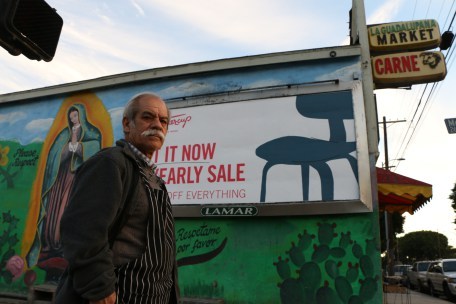 time since 2003! Yikes!
time since 2003! Yikes!
The real stunning story, though, was this:
The city will register only 280 homicides for all of 2015. That would seem sad, and for 280 victims and their families and friends, it most certainly is – I can say this as a reporter who has covered hundreds of murders in his career. I know how murder can destroy not just one life, but the lives of the surviving family as well.
To understand, however, why that number could actually be encouraging news, a remarkable event, you need the context. Here’s some:
Pitched as a 10 percent increase, 280 homicides is actually the city’s third lowest homicide figure since 2000 and part of a drop in crime that has been going on since roughly 2007. In fact, apart from 2013-2014, the city hasn’t had that few homicides since 1967, when L.A.’s population was a third smaller than it is today (roughly 2.4 million people then compared with 3.8 million today).
You’ll remember, perhaps, that in August there was a collective freak-out at the increase in homicides that month. I thought folks should have maintained some calm and context, and dealt with it seriously and professionally, which is what it appears LAPD proceeded to do. The rest of the year saw monthly homicide numbers fall again.
My guess is that in a heavily armed culture, and a very large city, we won’t see homicides dropping to, say, 200 a year. So it’s possible that we’re at about the lowest crime levels a city the size of L.A. can reasonably produce. I’d love to be proved wrong, but barring a deep change in our permissive gun culture or a massive tax increase doubling the size of the LAPD, I’d bet against it.
If those numbers crept up consistently year after year, that would be cause for great concern. But at this point, if crime figures rise 10 percent, or drop by that much, from one year to the next, it’s worth understanding and addressing with calm and context — but not frothing over.
I say this after, again, years as a crime reporter, and fully aware that some areas of the city, and of the region, still have serious problems and that these need attention.
Nor am I saying murder is okay if it’s below a certain number. Just that there are stories we ought also to pay attention to.
The real story is that, while we witness blooms of intercultural savagery around the world, in our region of races, languages, and religions from every corner of the globe, crime has become negligible – a minor part of life and not just for wealthy folks, but, importantly and especially, for working people.
Yes, Rodney King, we can all get along and, by and large, in Southern California, we are. In the end, the 2015 homicide figures, as painful as they are for some families, did reflect that.
(Hate crime, btw, is almost nonexistent, certainly compared to the volume and the sheer violence of those crimes in the early and mid-2000s, most of them committed by Latino street gangs against blacks.)
The real story is that this drop in crime began during the country’s Great Recession, and is taking place in a region where poorly paid service jobs have replaced so many good-paying union jobs with solid benefits; where dense apartment complexes have replaced so many single-family homes.
The real story is how many working-class neighborhoods, where murder once stunted life and commerce, are now mercifully at peace, and property values are reflecting that.
And, above all, the real story is that gang violence has dropped precipitously. (Remember: L.A. used to have way more than 280 gang-related homicides a year). So has gangs’ public behavior that did so much to blight those working-class neighborhoods that could least afford their crap. Gangs no longer have the run of the region.
This morning I was out on a street that was notorious for its gang in the 1990s. I found it quiet, pleasant, unscarred by graffiti. On the contrary, the houses seemed improved, freshly painted – one of many such neighborhoods all across Southern California.
Later, I was in Lincoln Park, talking with Braulio Garcia, a Mexican immigrant who has owned La Guadalupana Market (pictured above) since 1988. Up to about decade ago, he said, gangs were everywhere in Lincoln Park. A few blocks away is a gang mural, apparently from the 1990s, that lists the members of the neighborhood crew, and giving an RIP to a few friends who didn’t make it. Now, Mr. Garcia told me, he doesn’t see gangs or their graffiti at all.
Certainly lifted my spirits.
So on that note I’ll leave you, while daring to suggest that things are looking up, and hoping, meanwhile, that we have a Happy New Year, one and all.
The post L.A. Murder – Not The Real Story Any More appeared first on True Tales: a Reporter's Blog.



